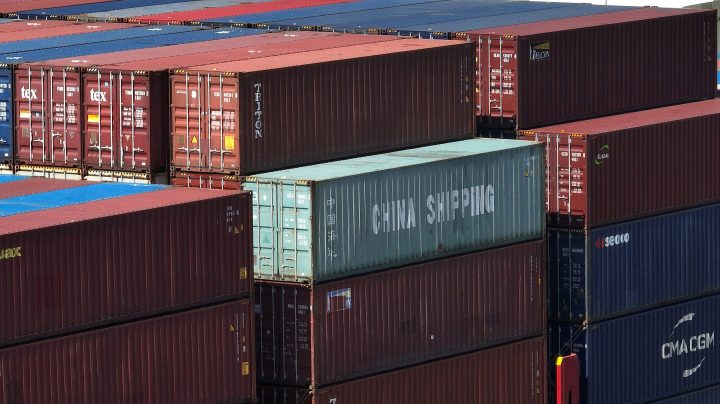
U.S., Europe work to hammer out new agreement on tariffs

It’s easy to forget, but the United States is still technically caught in the trade war started back during the Trump administration. Remember those steel and aluminum tariffs that were supposed to target China but also pulled in Europe and Canada?
Most of those tariffs still exist, although the U.S. tariffs of European metals are on pause, along with the European’s retaliatory tariffs on us. Bloomberg is out with some reporting Thursday saying the U.S. and EU are working towards a longer-term solution, one that would shift the focus of the tariffs back towards China.
Whatever deal they come up with is supposed to be worked out by the end of October.
The Trump-era tariffs were imposed with the legal justification of protecting America’s national security. But they were also about protecting America’s steel and aluminum producers from cheaper Chinese imports.
Now, said Erica York at the Tax Foundation, “we’re really close to the same place we were when when President Trump left office, President Biden has maintained most of the tariffs that were put in place back in 2018 and 2019.”
But in 2021, the Americans and the Europeans made a temporary deal.
“Where we stand today is that the Biden administration agreed to allow limited quantities of EU metals to enter the U.S. duty free,” said Lehigh University’s Mary Anne Madeira.
But that deal is set to expire at the end of October, said Charles Ries at the RAND Corporation.
“The question is, can something a little bit more enduring be put in place on steel and aluminum both to deal with the problems of trade in those commodities specifically, but also to better manage these high energy intensity product imports,” Ries said.
Steel and aluminum production are major carbon emitters, and tying quotas to how they are produced could favor U.S. and EU manufacturers, said Sagatom Saha at the Center on Global Energy Policy at Columbia University.
And so, for the Biden administration, “they kept the threat of the tariffs alive,” Saha said. “And now they’re using that toward notionally towards climate ends and to tackle the China issue.”
But Saha expects that sorting all this out will likely take a while.
There’s a lot happening in the world. Through it all, Marketplace is here for you.
You rely on Marketplace to break down the world’s events and tell you how it affects you in a fact-based, approachable way. We rely on your financial support to keep making that possible.
Your donation today powers the independent journalism that you rely on. For just $5/month, you can help sustain Marketplace so we can keep reporting on the things that matter to you.

















